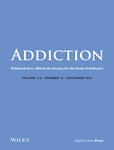During the COVID-19 pandemic, there was a surge in opioid overdose deaths (OODs) in Massachusetts, USA, particularly among Black and Hispanic/Latinx populations. Despite the increasing racial and ethnic disparities in OODs, there was no compensatory increase in naloxone distributed to these groups. We aimed to evaluate two community-based naloxone expansion strategies, with the objective of identifying approaches that could mitigate mortality and racial and ethnic disparities in OODs.
Individual-based simulation model. We measured naloxone availability using naloxone kits per OOD and evaluated scenarios of achieving higher benchmarks for naloxone availability (i.e. 40, 60 and 80 kits per OOD) from 2022 levels (overall: 26.0, White: 28.8, Black: 17.3, Hispanic/Latinx: 18.9). We compared two naloxone distribution strategies: (1) proportional distribution: achieving the benchmark ratio at the overall population level while distributing additional kits proportional to the 2022 level for each racial/ethnic group (at 40 kits per OOD benchmark: overall: 40, White: 44.3, Black: 26.6, Hispanic/Latinx: 29.1), and (2) equity-focused distribution: achieving the benchmark ratio among each racial/ethnic group (at 40 kits per OOD benchmark: 40 for all groups).
Massachusetts, United States.
People at risk of OOD.
Annual number and rate of OODs, total healthcare costs of increasing naloxone availability.
Both naloxone distribution strategies yielded comparable predicted reductions in total OODs in 2025 and incurred similar incremental costs. However, the relative reduction in the rate of OODs differed across groups. For achieving an 80 kits per OOD benchmark, proportional distribution resulted in a projected 6.7%, 6.5% and 7.1% reduction in annual OODs in 2025 among White, Black and Hispanic/Latinx populations, respectively. In contrast, equity-focused distribution achieved a reduction of 5.7%, 11.3% and 10.2% in the respective groups. In all scenarios, the cost per OOD averted was lower than the generally accepted thresholds for cost per life saved.
An equity-focused naloxone distribution strategy designed to reduce racial and ethnic disparities in naloxone availability could improve health equity among racial and ethnic groups while potentially improving overall population health at lower healthcare costs per opioid overdose death averted than a proportional distribution strategy.



